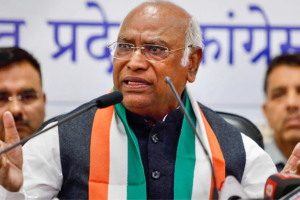A start-up is the start of a venture, entrepreneurial in nature, innovative in product or process, that creates jobs and solutions and benefits society. One often gets to read success stories about how traditional and experimental ventures started with a very simple idea, but with the right impetus and funds, have managed to soar and make a real difference.
Advertisement
Even as the world was crippled by the pandemic in 2020, ventures like Pharmeasy, CRED, Groww, Digit Insurance, to name a few, raised a whopping $12.1 million in India. Technically and managerially brilliant men and women, recent graduates or experienced professionals are branching out into entrepreneurship and how.
India is making a mark on the global map, and quite a visible one at that; start-ups incubated in Mumbai, Delhi, Bangalore, Pune, Chennai and Hyderabad are all spreading their wings and becoming impactful enterprises.
Sectors that show the maximum promise in the coming decade would be E-Commerce, with predicted growth between 2019-2024 of 27 percent; Health Tech with a 39 percent year-on-year growth; Fintech (Predicted market share: $106 billion by 2025); EdTech (predicted potential: $30 billion in the coming 10 years); Travel Tech (Predicted Growth: $11.11 billion by 2025) and Logistics (Predicted growth of 10.4 percent from 2020-2024.)
Pro-entrepreneurship government policies like “Digital India’, ‘Startup India’, ‘Aatmanirbhar Bharat’, increasing talent pool since the IT boom in the 2000s, increasing smartphone penetration (estimated at 490.9 million by 2022), an expanding domestic market, and last but not the least, availability of funding channels are the reasons contributing to this welcome change in the country.
Mumbai and Delhi, being the financial capital and the national capital respectively, are the market leaders, but cities like Bangalore, Chennai, Hyderabad and Pune, to mention a few, are speeding up the start-up ladder with the availability of angel investor banks, start-up incubators, venture capital firms, well-planned infrastructure, entrepreneur community-building events, and paparazzi focus on start-up entrepreneurs.
But where is Kolkata? “The city of palaces”, as the British liked to call the then Calcutta, was the intellectual centre of the sub-continent in the mid-1800s. In 1875, “The Statesman” started in Calcutta and in the same year the Indian Museum was built.
Nobel Prize winners like Rabindranath Tagore, Mother Teresa, Amartya Sen and Abhijit Binayak Bandhopadhyay belong to this once illustrious city.
An academic and cultural hub, and a city of many firsts, was once the pride of the nation in many ways, leading from the front and making a mark.
With no dearth of talent, why isn’t Kolkata a part of the start-up glory? Why is it lagging in the race with other metros? It is difficult to miss that none of the much written about start-up ventures have been incubated in Kolkata.
As written by Abhinandan Das in his unpublished thesis, “Politics of Industrialization in West Bengal (1948-2000): Case Studies of Haldia and Durgapur industrial Zones”, the history of industrial development or the lack of it in 20th century Bengal can be divided into four phases – 1948-1965; 1966-1976; 1977-1985 and 1985-2000.
Phase 1 represented an era of hope and reconstruction. The Durgapur Steel plant, Damodar Valley Corporation power station and dairy based industries in Kalyani were markers of growth. Between 1947 and 1958, West Bengal grew at an annual compound rate of 3.31 per cent, higher than the all-India average of 2.75 per cent. Bengal did lead the way.
But someone was being quietly effective – Bombay was speeding up the ladder of development.
By 1964, Bengal was lagging far behind Bombay. While the former had employed 8.87 lakh people, the latter had generated employment through factories to 13.53 lakh people.
Bengal relied heavily on the export of jute and tea. The Union government focused on freight equalization for coal and steel and import substitution; the promotion of export-oriented industries was neglected.
The major blow to Bengal’s development was arguably caused by the labour unrest that took a violent form between 1965 and 1970, which was irrevocably worsened by crop failure and inflation. Food riots took place and Bengal bore the brunt of the Left Naxalite movement.
Maharashtra too witnessed major labour problems, but the fact was that Bengal’s industries were grinding to a stop. The political turmoil coupled with nationwide economic recession and lack of facilities for diversification of industrial base, caused a major impediment.
During the tenure of the Left Front, the new industrial policy of 1978 sought to “curtail the stranglehold of big houses, foreign multinational firms in the organized sector” – the focus was laid on the growth of small and cottage industries.
This should have acted as a catalyst to Bengal but unfortunately, poor implementation of policies or conflict with the Union government resulted in a massive opportunity being missed.
Talent never lacked in Bengal, but the resilience to grab opportunities and relentlessness to convert these was something Bengal was always lackadaisical about.
This is why today many lately developed metros like Bengaluru have overtaken Kolkata.
The Left Front is often blamed for the decline of work culture in Bengal. To be fair, they did inherit a declining industrial economy, but they did little to revive it, as the focus was laid on politics more than economics.
In 1982, the state government scrapped English teaching from primary schools – the effects were seen much later. With the IT boom in the 1990s, when an abundance of engineering talent in the state could have caused major development, the lack of English language skills acted as a handicap.
In 2007, thankfully this decision was revoked, but the damage had already run deep.
Kolkata today is one of the most liveable metros, with good transport facilities. New Town with its planned construction looks like a smart city from every angle. Then why does Kolkata look like a retirement haven rather than a city led by vibrant youth?
Bengal does have venture capital firms, start-up incubators, and networking events – but the number and approach are laughable when compared to the other metros of India. Start-ups find it difficult to thrive in Bengal, so even if they are launched, they are often seen shutting shop, or shifting base.
What do we need to encourage incubation?
A platform to encourage ‘what’ a start-up has to offer rather than ‘who’ the founders know, could be a welcome start.
Availability of venture capital firms and angel investors, with an organized template for a start-up to create a proposal and present the idea to a panel for funding, could be the next step.
Active participation of reputed educational institutions like IIM Calcutta and IIT Kharagpur in not just technological but also service-oriented start-ups could do a great deal to increase the quantity and ensure the quality of ventures belonging to a variety of sectors.
Involving start-ups in state government projects, by opening up a channel where all who are eligible can offer proposals and the best fit is selected, would be a major motivating factor for new businesses.
A few procedural changes, new initiatives by the government, educational institutions and Kolkata-based business tycoons, and a proactive work culture could do wonders for Bengal and Kolkata.
The writer is a young entrepreneur and
co-founder of a creative agency.











